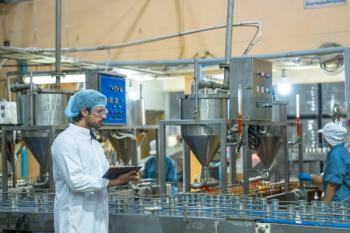
Smart Technology in the Kitchen: How Spectroscopy is Driving Changes in Health Monitoring
This explainer video highlights how spectroscopic sensors can help improve health monitoring applications.
This video was created by NotebookLM.
A recent study conducted by researchers in Rome presented a novel approach to nutritional monitoring through an automatic beverage recognition system that combines compact spectroscopy with machine learning (1,2). They developed a compact sensor system that could improve nutrition tracking by embedding it directly into everyday objects like cups. Unlike traditional food tracking apps, which rely on manual input and often suffer from inaccuracy, this system uses spectroscopy to automatically identify beverages (1,2). In the above explainer video, it is discussed how different beverages have a unique “spectral fingerprint” based on how it interacts with light. The sensor scans the drink, captures this fingerprint, and an artificial intelligence (AI) model classifies it by comparing it to a database of known beverages (1,2). The system achieved more than 96% accuracy using data from four wavelengths, making it both fast and energy-efficient (1,2). A tool like this could also offer noninvasive nutritional monitoring. With potential applications across the Internet of Things, it could make health tracking accessible to a wider population, including those less comfortable with smartphones.
What is the Internet of Things?
The Internet of Things (IoT) refers to the network of physical devices embedded with sensors, software, and connectivity that allow them to collect and exchange data (3). These devices range from everyday objects like smart thermostats, wearable fitness trackers, and home assistants to complex systems in healthcare, manufacturing, and transportation (3). The goal of IoT devices is to improve the efficiency of communication. For example, IoT-enabled machines in factories can detect maintenance needs before breakdowns occur, while connected medical devices can monitor patient health remotely (3). In smart cities, IoT helps manage traffic flow, reduce energy consumption, and improve public services (3). However, as the number of connected devices grows, there are concerns emerging, especially in regard to data privacy. However, it is clear that as the world becomes more connected via the Internet, the presence of IoT devices is expected to only increase.
References
- Wetzel, W. Using Spectroscopic Sensors in Creating a New Beverage Recognition System that Improves on Smartphone Apps. Spectroscopy. Available at:
https://www.spectroscopyonline.com/view/using-spectroscopic-sensors-in-creating-a-new-beverage-recognition-system-that-improves-on-smartphone-apps (accessed 2025-08-21). - Montaina, L.; Palmieri, E.; Lucarini, I.; et al. Toward a User-Accessible Spectroscopic Sensing Platform for Beverage Recognition Through K-Nearest Neighbors Algorithm. Sensors 2025, 25 (14), 4264. DOI:
10.3390/s25144264 - IBM, What is the Internet of Things (IoT)? IBM.com. Available at:
https://www.ibm.com/think/topics/internet-of-things#:~:text=future%20of%20IoT-,What%20is%20the%20IoT?,inventory%20and%20shipments%20in%20warehouses (accessed 2025-08-21).
Newsletter
Get essential updates on the latest spectroscopy technologies, regulatory standards, and best practices—subscribe today to Spectroscopy.





